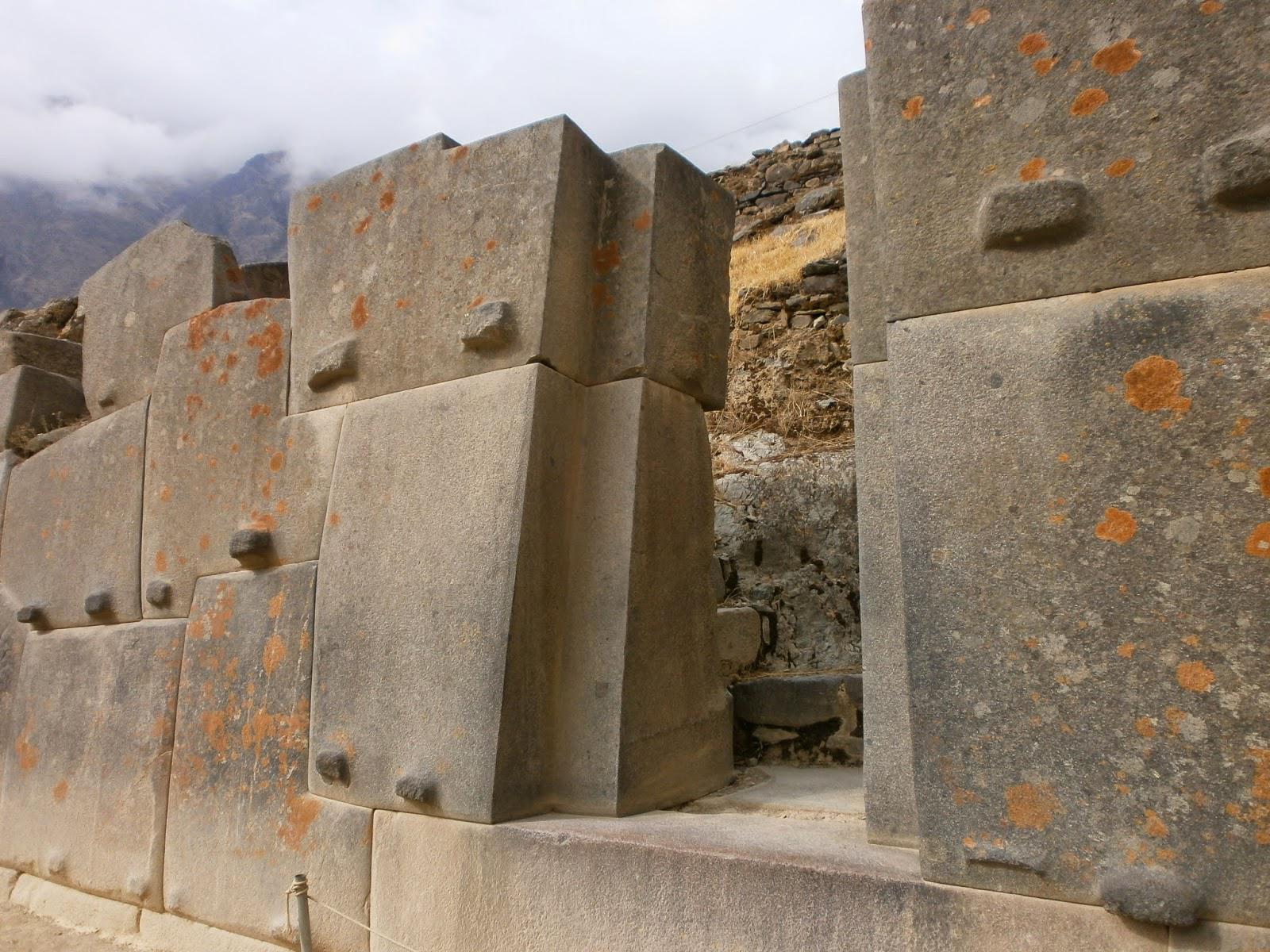
Could Ancient Peruvians Really Know How To Melt Stone Blocks..
About Those Stones…
We often hear that the stones were created onsite using a “Geopolymer” method. This is where the blocks were created as a kind of concrete. They ground down the limestone and turned it into a slurry with water then poured that slurry into molds which would form the blocks.
One of the chief proponents of this is Joseph Davidovits from the Geopolymer Institute in France. Davidovits has stated publicly (1) that South America’s Megalithic Marvels in Tiwanaku and Pumapunku are made with “Artificial Geopolymers”. It is important to note here that geopolymer usage is most associated with Sandstone and Limestone. Davidovits proposes that in South America, plant extracts were used for softening limestone or stone containing limestone. Davidovits claims that other stone softening extracts would have been used for the volcanic andesite structures in South America. Andesite has a mineral composition that is intermediate between granite and basalt. For molding volcanic andesite stones, Davidovits believes the builders used an acid-based geopolymer technology involving carboxylic acids manufactured from local biomass (maize), which reacted with a hardener based on guano. Based on his findings, Davidovits projects the following ages for South American megaliths:
Red sandstone megaliths: alkaline geopolymer, 1400 years of age
Grey andesite structures: acidic geopolymer, 1300 years of age
Davidovits also suggests (2) that some or all of the limestone blocks used in the construction of the Giza Pyramids in Egypt were created using a geopolymer method. Davidovits and his team made blocks with the same chemical makeup and appearance of the Giza pyramid (outer casing) stones with perfect joints between the blocks. In the France climate in which the experiment was done, it took 3 months to cure a block.
I’ve spent some time researching Joseph Davidovits’ theory using several of his video presentations as well as comments on his theory made by Graham Hancock. Here is my summarized compilation of that work:
Davidovits’ work was done using sandstone or limestone ground to the consistency of sand in both his Gaza and Peru experiments.
There were 2 ½ million limestone blocks used in the Great Pyramid of Giza. Shells and fossils could be seen in the limestone rocks that he crushed and used to replicate the Gaza Pyramid blocks. Davidovits is suggesting that some or all of those blocks were created as a kind of concrete (geopolymer).
In Peru, Davidovits concluded that the blocks used in the red sandstone megaliths were Geopolymer in an alkaline-medium and the grey volcanic andesite structures were made from Geopolymer in acidic-medium. He stated that his hypothesis is also relying on old legends with plant extracts capable of softening stone. There are peer reviewed articles to support this theory.
In Egypt, the idea of geopolymer being used to create limestone blocks used in the construction of the Great Pyramid of Giza has been discounted by mainstream Egyptologists. However, additional support for this theory is coming forward from the scientific community.
We often hear that the stones were created onsite using a “Geopolymer” method. This is where the blocks were created as a kind of concrete. They ground down the limestone and turned it into a slurry with water then poured that slurry into molds which would form the blocks.
One of the chief proponents of this is Joseph Davidovits from the Geopolymer Institute in France. Davidovits has stated publicly (1) that South America’s Megalithic Marvels in Tiwanaku and Pumapunku are made with “Artificial Geopolymers”. It is important to note here that geopolymer usage is most associated with Sandstone and Limestone. Davidovits proposes that in South America, plant extracts were used for softening limestone or stone containing limestone. Davidovits claims that other stone softening extracts would have been used for the volcanic andesite structures in South America. Andesite has a mineral composition that is intermediate between granite and basalt. For molding volcanic andesite stones, Davidovits believes the builders used an acid-based geopolymer technology involving carboxylic acids manufactured from local biomass (maize), which reacted with a hardener based on guano. Based on his findings, Davidovits projects the following ages for South American megaliths:
Red sandstone megaliths: alkaline geopolymer, 1400 years of age
Grey andesite structures: acidic geopolymer, 1300 years of age
Davidovits also suggests (2) that some or all of the limestone blocks used in the construction of the Giza Pyramids in Egypt were created using a geopolymer method. Davidovits and his team made blocks with the same chemical makeup and appearance of the Giza pyramid (outer casing) stones with perfect joints between the blocks. In the France climate in which the experiment was done, it took 3 months to cure a block.
I’ve spent some time researching Joseph Davidovits’ theory using several of his video presentations as well as comments on his theory made by Graham Hancock. Here is my summarized compilation of that work:
Davidovits’ work was done using sandstone or limestone ground to the consistency of sand in both his Gaza and Peru experiments.
There were 2 ½ million limestone blocks used in the Great Pyramid of Giza. Shells and fossils could be seen in the limestone rocks that he crushed and used to replicate the Gaza Pyramid blocks. Davidovits is suggesting that some or all of those blocks were created as a kind of concrete (geopolymer).
In Peru, Davidovits concluded that the blocks used in the red sandstone megaliths were Geopolymer in an alkaline-medium and the grey volcanic andesite structures were made from Geopolymer in acidic-medium. He stated that his hypothesis is also relying on old legends with plant extracts capable of softening stone. There are peer reviewed articles to support this theory.
In Egypt, the idea of geopolymer being used to create limestone blocks used in the construction of the Great Pyramid of Giza has been discounted by mainstream Egyptologists. However, additional support for this theory is coming forward from the scientific community.
Advertisements
24 October 2023
Advertisements



